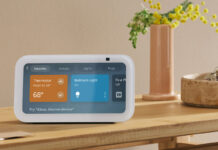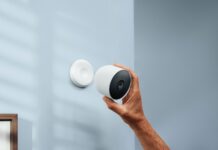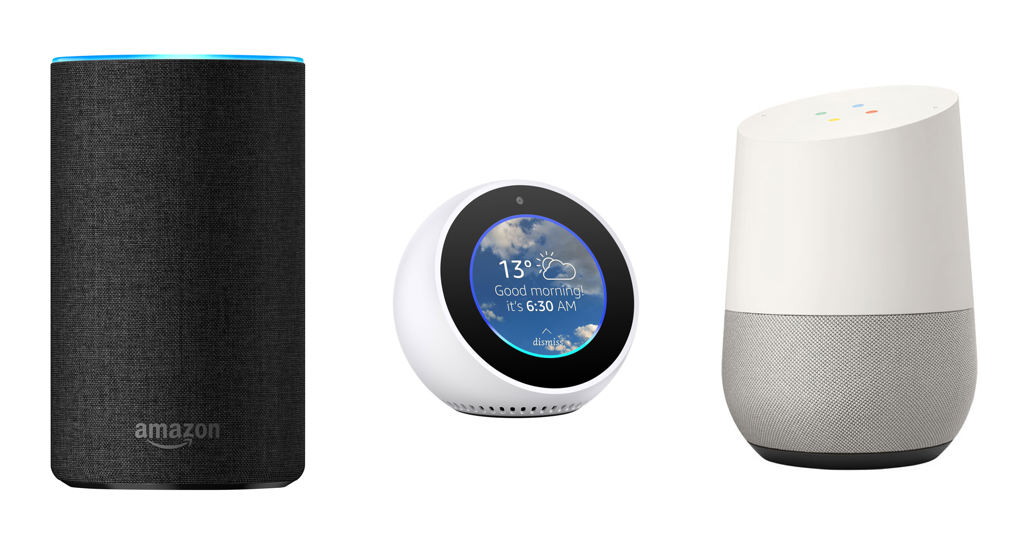 If you’ve been following along with our 12 months of smart home improvements series since the beginning of the year, by now you’ll have a basic smart security setup in place (via smart locks and smart doorbell cameras), you’ll have added a touch of smart convenience to your home (through smart lighting, plugs, and switches), and you’ll have considered smart home products as useful tools for energy management. That’a a pretty good start to developing your own fully connected smart home, but we’ve still got a long way to go, and today we take the next step with a look at smart home voice assistants.
If you’ve been following along with our 12 months of smart home improvements series since the beginning of the year, by now you’ll have a basic smart security setup in place (via smart locks and smart doorbell cameras), you’ll have added a touch of smart convenience to your home (through smart lighting, plugs, and switches), and you’ll have considered smart home products as useful tools for energy management. That’a a pretty good start to developing your own fully connected smart home, but we’ve still got a long way to go, and today we take the next step with a look at smart home voice assistants.
At this point in our journey, you’ll certainly be familiar with the 3 pillars of smart home products: Energy and Efficiency, Safety and Security, and Comfort and Convenience. Of course, this third category is the one to which voice assistants belong. If you’d like to learn all about how these newfangled devices can add to the comfort and convenience of your smart home, read on as we explore this topic in some detail and take a look at some of the voice assistant options that are currently available.
Step Six: Adding A Smart Voice Assistant
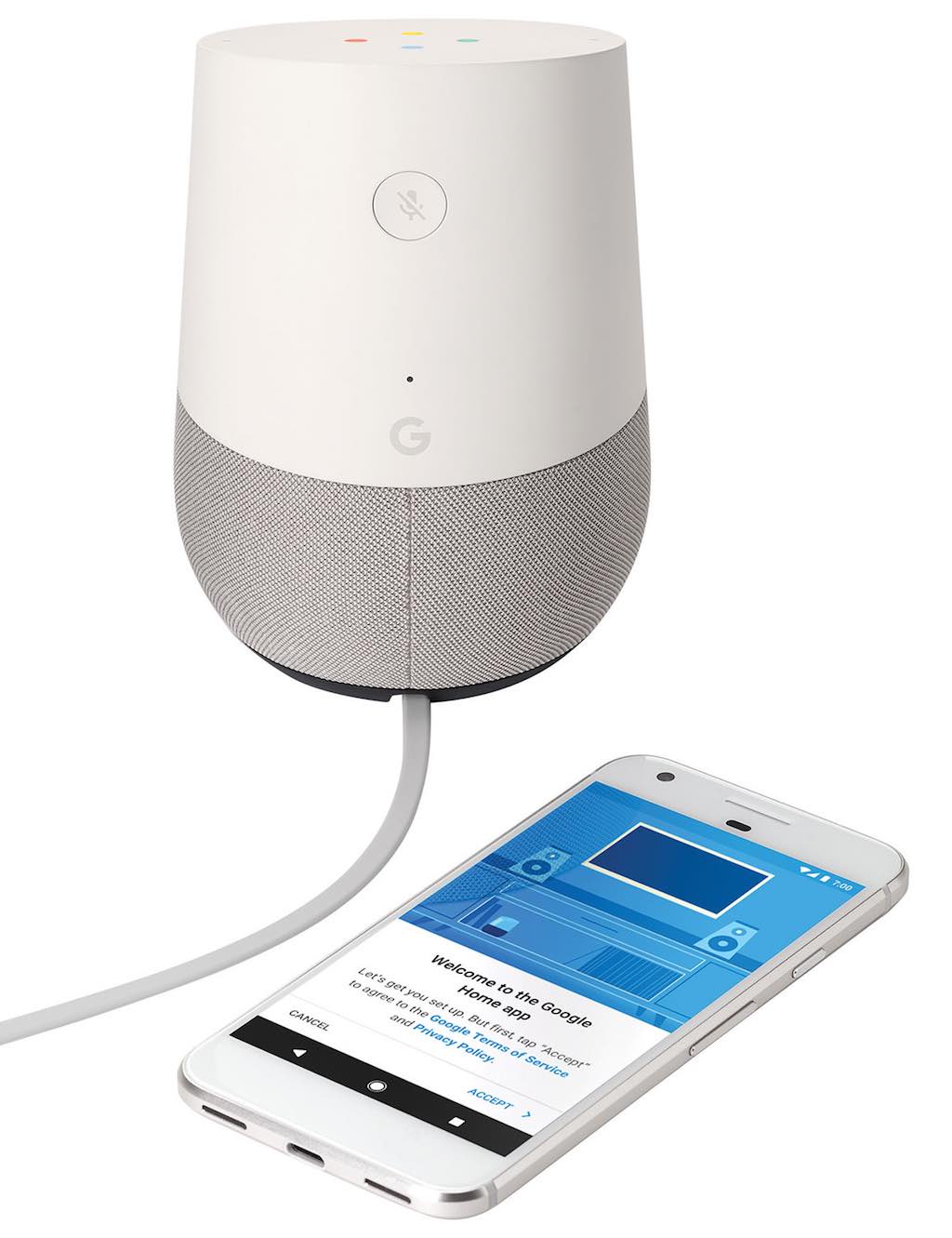 Why add a voice assistant device to your smart home setup? Well, there are actually a number of very solid reasons for doing so. In addition to having an encyclopedia of knowledge and information just a few words away, you can also control many of your other smart home products using a smart voice assistant. What’s more, new features seem to crop up on an almost daily basis, as well as new relationships among products that work with given voice assistants. More recently, they’ve even started making voice assistants with high quality speakers (for those with a love of music). In fact, Amazon and Google (the 2 heavyweight combatants in the voice assistant space at the present time) each have multiple options out there when it comes to voice assistant hardware. We’ll get into a few of the most popular models a bit further down the page, but let’s first take a look at several of the key features you can expect to find in a typical voice assistant.
Why add a voice assistant device to your smart home setup? Well, there are actually a number of very solid reasons for doing so. In addition to having an encyclopedia of knowledge and information just a few words away, you can also control many of your other smart home products using a smart voice assistant. What’s more, new features seem to crop up on an almost daily basis, as well as new relationships among products that work with given voice assistants. More recently, they’ve even started making voice assistants with high quality speakers (for those with a love of music). In fact, Amazon and Google (the 2 heavyweight combatants in the voice assistant space at the present time) each have multiple options out there when it comes to voice assistant hardware. We’ll get into a few of the most popular models a bit further down the page, but let’s first take a look at several of the key features you can expect to find in a typical voice assistant.
Key Features and Benefits of Smart Voice Assistants
When it comes to smart voice assistants, there are numerous useful features that make them attractive to smart home enthusiasts, and the list just keeps on growing every day. Here’s a selection of a few of the absolute top selling points that you can expect to find in a smart voice assistant:
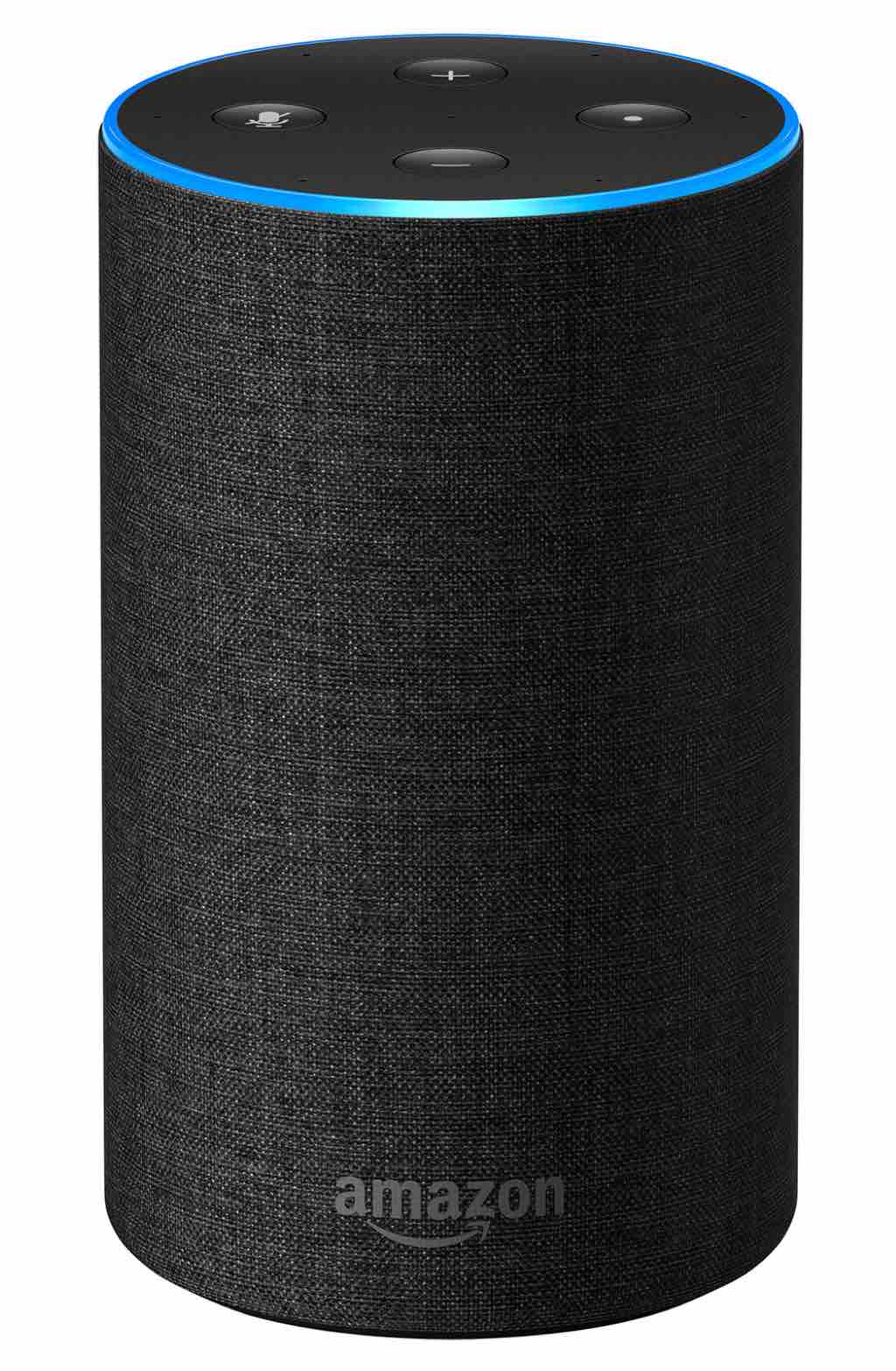 Voice Based Control – With a voice assistant installed, you’ll be able to do numerous tasks through simple voice commands. Whether it’s turning off the lights, upping your thermostat, checking the weather report, locking your doors, calling a friend, or a multitude of other tasks, it can all easily be done with a simple voice command. You may never have to move again!
Voice Based Control – With a voice assistant installed, you’ll be able to do numerous tasks through simple voice commands. Whether it’s turning off the lights, upping your thermostat, checking the weather report, locking your doors, calling a friend, or a multitude of other tasks, it can all easily be done with a simple voice command. You may never have to move again!- Integration with Other Smart Devices – Smart devices are increasingly able to communicate with one another thanks to the integration provided by various smart home ecosystems, and smart voice assistants are no exception. Many voice assistants today are ecosystems themselves, and through them your other smart devices are controlled—devices like lights, plugs, switches, security cameras, locks, blinds, thermostats, doorbells, sensors, and so much more. Products from companies like Philips Hue, Sony, Belkin WeMo, Nest, Yale, and others can now all work together as a part of a larger connected home, being controlled by your voice assistant.
- Knowledge Unlimited – In my opinion, one of the best reasons for the existence of voice assistants is to bring you quick access to practically unlimited knowledge via that wonderful piece of technology known as the Internet.
- High Quality Sound – Many of today’s smart voice assistants are great for music lovers. Not only do their speakers frequently provide high sound quality, but if you pair more than one assistant together you’ll have your tunes in stereo. Of course, not every voice assistant comes with a high end speaker, but they’re certainly not difficult to find if that’s what you’re interested in. You’ll certainly see this when we cover specific voice assistant models below.
The above features barely scratch the surface of what these devices can typically do, but rather than continue the list, I’d like to get straight into a few specific models and show you what they can do there. Let’s get to it.
Popular Voice Assistant Options
Let’s now take a look at a couple of voice assistant options from each of the two major players in this space: Amazon and Google. First up, Google:
Google Home & Google Home Max
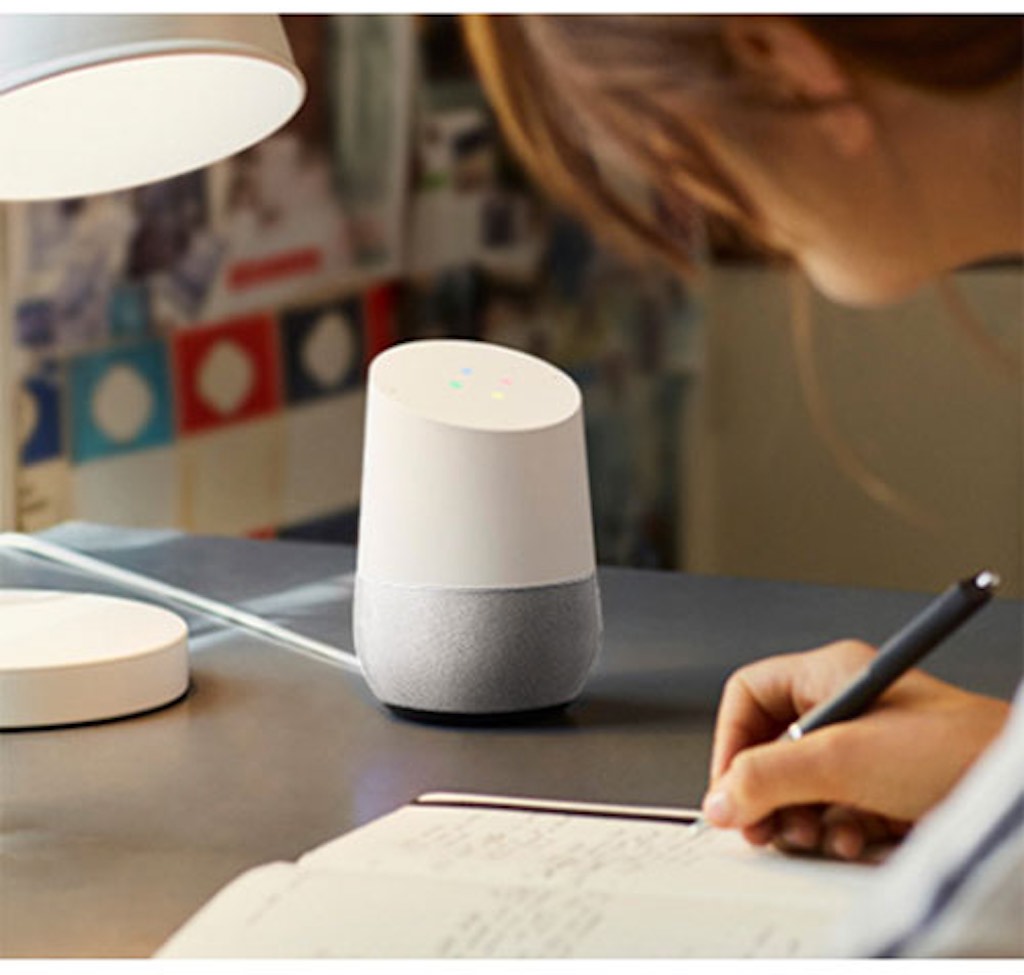 One of the most popular voice assistants on the market today has got to be the classic Google Home, which seems to know just about everything. For example, Google Home can do mathematical calculations for you, give you definitions of words, tell you the latest weather forecast, let you know when a specific movie is coming out, give you last night’s hockey scores, translate a phrase into (or from) a foreign language, answer your currency conversion queries, give you a traffic update, tell you who Tim Allen is, and oodles and oodles more! The Google Home can also sync with Chromecast to cast your favourite media and movies directly to your TV screen. All you have to do is tell it what you want to see, and presto! Similarly, Google Home can bring the music through its high excursion speaker, playing tunes from popular services like Google Play Music and Spotify. You can even have it play music directly from your other smart Android and iOS based devices. And, you’ll be listening in rich HiFi sound, which gets even better when you pair multiple Google Home units together for true stereo sound throughout your home.
One of the most popular voice assistants on the market today has got to be the classic Google Home, which seems to know just about everything. For example, Google Home can do mathematical calculations for you, give you definitions of words, tell you the latest weather forecast, let you know when a specific movie is coming out, give you last night’s hockey scores, translate a phrase into (or from) a foreign language, answer your currency conversion queries, give you a traffic update, tell you who Tim Allen is, and oodles and oodles more! The Google Home can also sync with Chromecast to cast your favourite media and movies directly to your TV screen. All you have to do is tell it what you want to see, and presto! Similarly, Google Home can bring the music through its high excursion speaker, playing tunes from popular services like Google Play Music and Spotify. You can even have it play music directly from your other smart Android and iOS based devices. And, you’ll be listening in rich HiFi sound, which gets even better when you pair multiple Google Home units together for true stereo sound throughout your home.
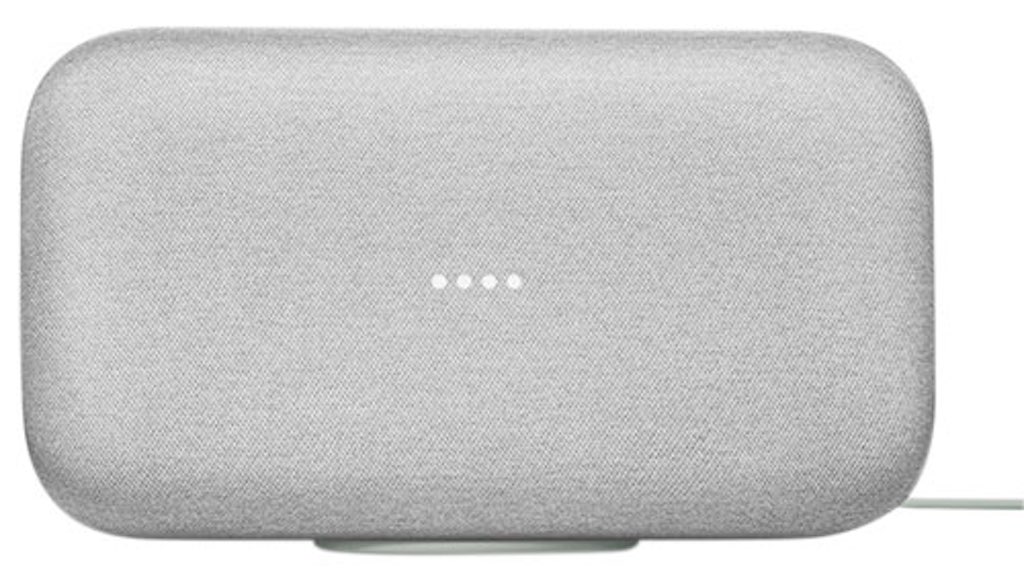
But the volume (and impressiveness) really spikes when at least one of your Google Home units is the Google Home Max, which, with its dual 4.5 inch woofers and pair of crystal clear tweeters, will take your sound to the Max! If you’d like to experience your favourite music like never before, this is the Google Home model for you. You can wirelessly stream tunes, just like with the standard Google Home, only with the Max you’ll feel like you’re hosting your own private concert. Sleek and stylish (if somewhat large), the Google Home Max fits beautifully into most any décor, and it can do all of the things that the regular Google Home can do as well, so if you’re a Google fan, it’s all the voice assistant you’re ever going to need.
Amazon Echo & Echo Spot
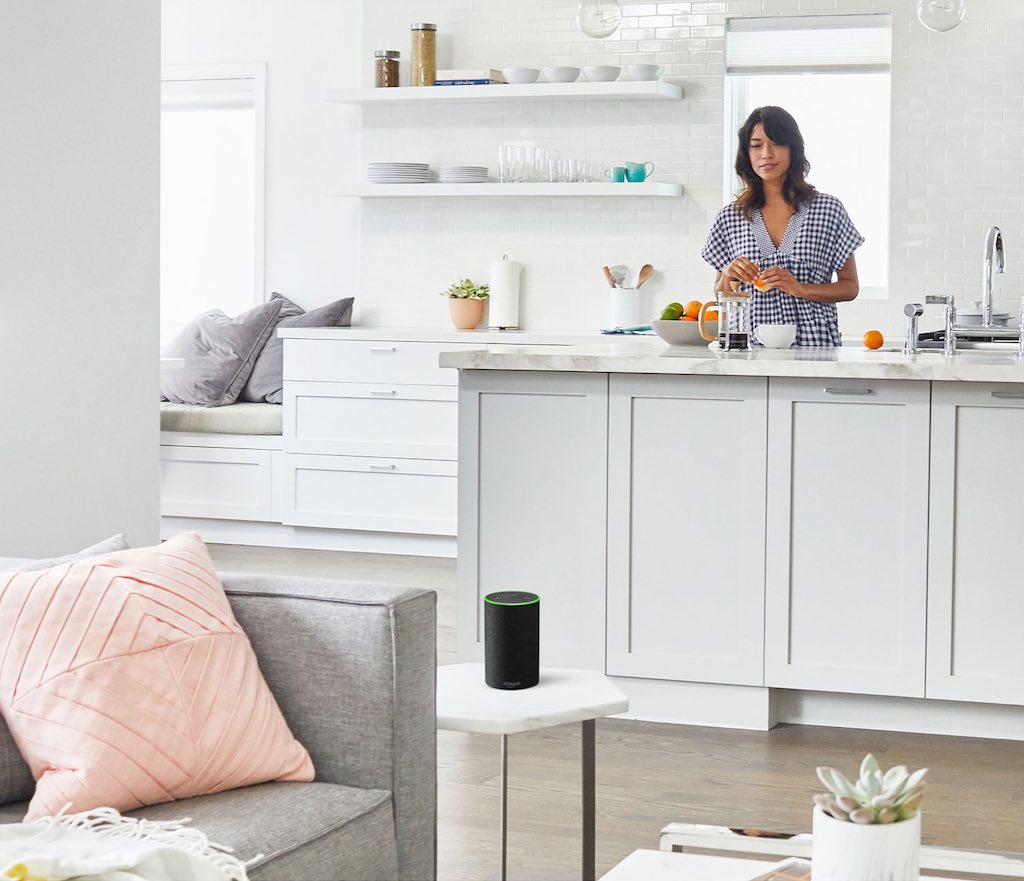 On the Amazon side of the ledger is the Amazon Echo, which has been busy impressing users with its modern good looks and access to the charming Alexa personality. Simply say “Alexa” from wherever you are in the room, and the Echo’s 7 specially engineered microphones will hear you, and Alexa will respond. You can ask Alexa what’s in your daily calendar, to turn a fan on or off, to change the television channel, to order a pizza online, to track your activity with Fitbit, to tell you the current price of gas, to set an alarm for you, to add an item to your “to do” list, to remind you about something later on, and so much more. Similarly, the Echo works with multiple smart home devices from a variety of different companies. These include Sony, Philips Hue, Insteon, SmartThings, Nest, ecobee, WeMo, and Wink, just to name a few. In fact, the Echo’s list of capabilities continues to grow every day; it’s already into the thousands. It’ll even allow you to request an Uber—provided you’re in one of their covered cities.
On the Amazon side of the ledger is the Amazon Echo, which has been busy impressing users with its modern good looks and access to the charming Alexa personality. Simply say “Alexa” from wherever you are in the room, and the Echo’s 7 specially engineered microphones will hear you, and Alexa will respond. You can ask Alexa what’s in your daily calendar, to turn a fan on or off, to change the television channel, to order a pizza online, to track your activity with Fitbit, to tell you the current price of gas, to set an alarm for you, to add an item to your “to do” list, to remind you about something later on, and so much more. Similarly, the Echo works with multiple smart home devices from a variety of different companies. These include Sony, Philips Hue, Insteon, SmartThings, Nest, ecobee, WeMo, and Wink, just to name a few. In fact, the Echo’s list of capabilities continues to grow every day; it’s already into the thousands. It’ll even allow you to request an Uber—provided you’re in one of their covered cities.
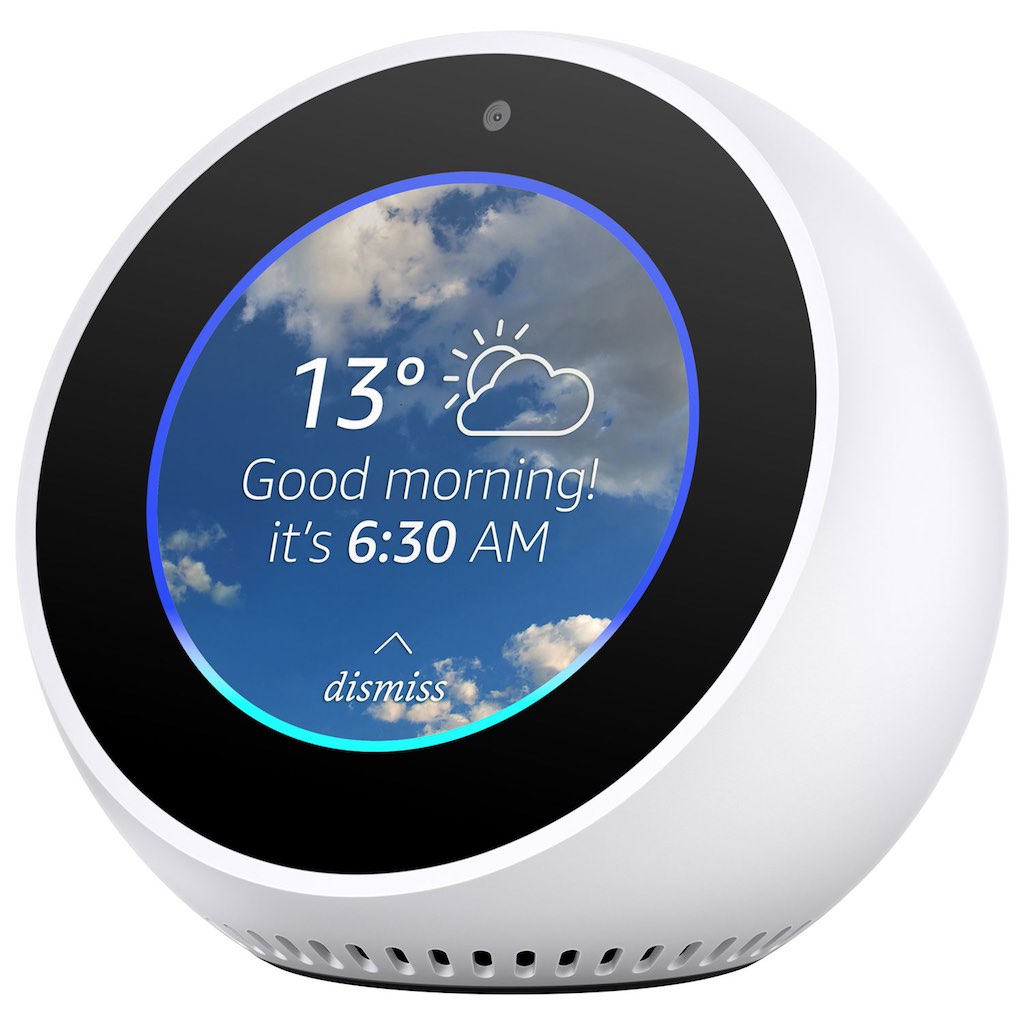 If something a bit smaller appeals to you more (not that the Echo is large by any means), you might enjoy the aesthetic of the Amazon Echo Spot—an alarm clock styled voice assistant that’s great if you want a truly discreet voice assistant. What’s also cool about the Amazon Echo Spot, besides the fact that it can pretty much do everything you’d expect from a first rate voice assistant, is that it has a small (480 x 480) screen to show you everything from images of things you search for online to fun and informative YouTube videos. I’ve actually been testing this device recently, and my review will be live on the blog soon, so be sure to keep an eye out for it so you can learn all about my experience with the Spot. Hint: I thought it was pretty cool.
If something a bit smaller appeals to you more (not that the Echo is large by any means), you might enjoy the aesthetic of the Amazon Echo Spot—an alarm clock styled voice assistant that’s great if you want a truly discreet voice assistant. What’s also cool about the Amazon Echo Spot, besides the fact that it can pretty much do everything you’d expect from a first rate voice assistant, is that it has a small (480 x 480) screen to show you everything from images of things you search for online to fun and informative YouTube videos. I’ve actually been testing this device recently, and my review will be live on the blog soon, so be sure to keep an eye out for it so you can learn all about my experience with the Spot. Hint: I thought it was pretty cool.
Final Thoughts
As you can see, voice assistants are becoming more diverse in their designs and more capable of managing your smart home and helping you out in myriad interesting ways every single day. I don’t necessarily think that voice assistants are for everyone, and there are definitely certain parts of the house that I’d advise not putting them in (the bathroom, the bedroom?), but there’s certainly no doubting the fact that they can bring all of your other devices together in a way that will greatly enhance your connected home. You can find more voice assistants and learn all about them by visiting Best Buy Canada and checking out your options.
Check out Best Buy’s other great articles in the 12 months of smart home improvement series!

